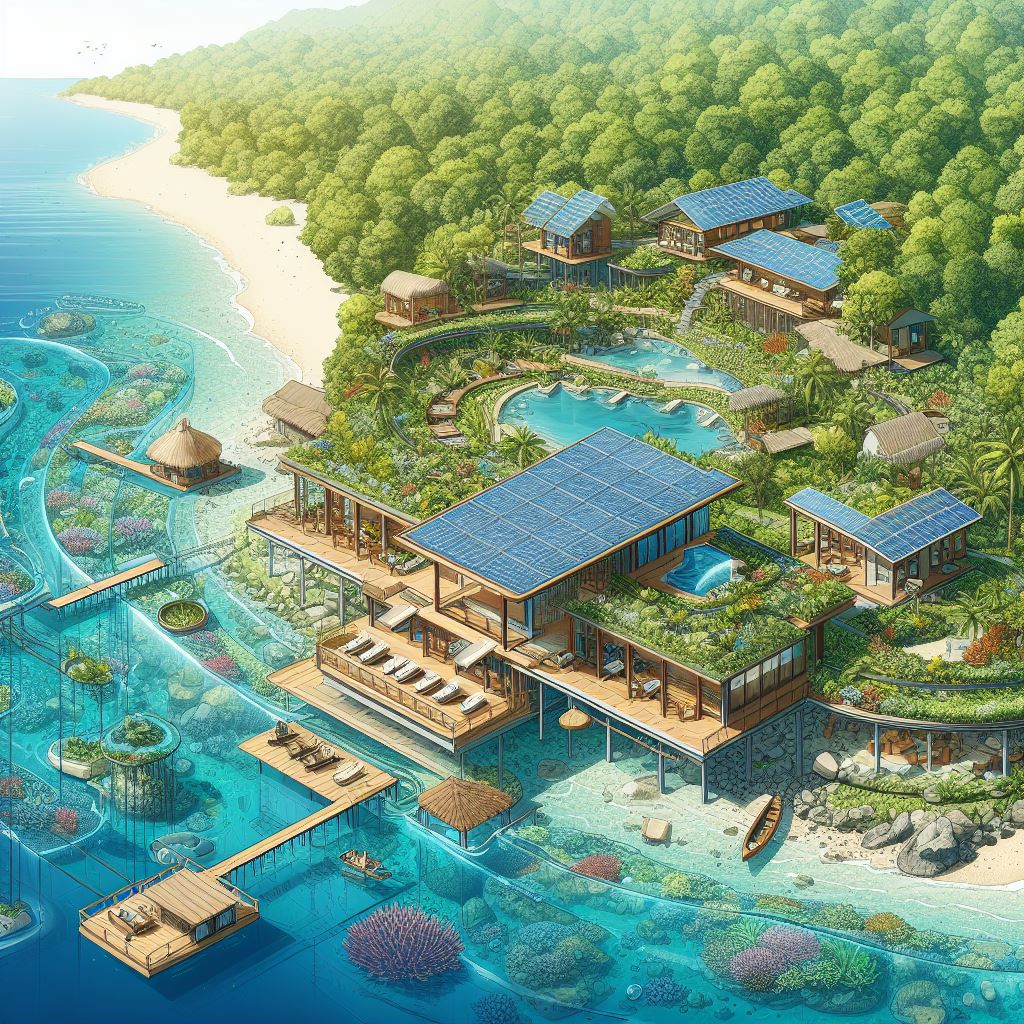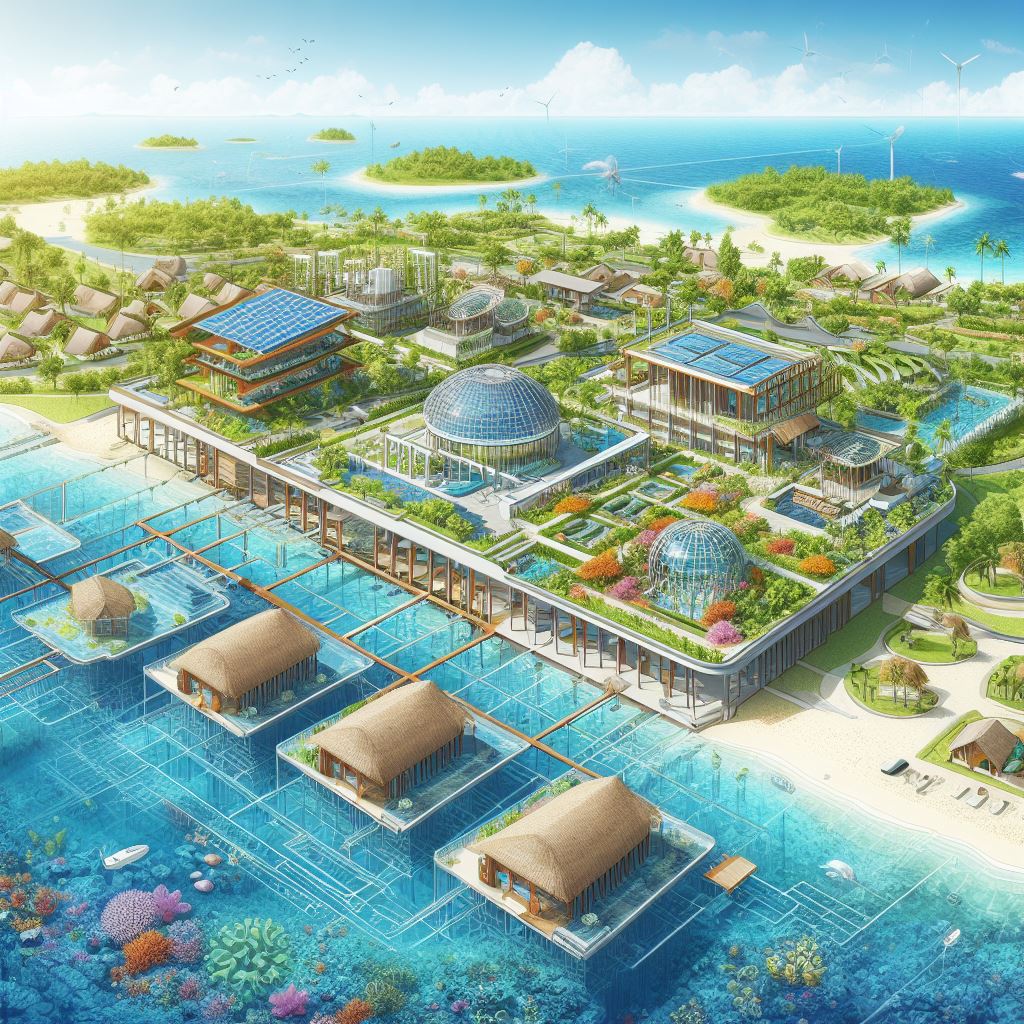
Civil Engineering's Role in Green Tourism Infrastructure
Introduction
Sustainable tourism has emerged as a pivotal element in the global tourism sector, emphasizing the need for eco-friendly and sustainable practices. The essence of sustainable tourism lies in its ability to meet the needs of the present without compromising the ability of future generations to meet their own needs. This article delves into the intricate relationship between civil engineering and sustainable tourism infrastructure development, exploring the environmental impacts, green building techniques, and the future of eco-tourism infrastructure. It is tailored for civil engineers, tourism industry stakeholders, environmentalists, government agencies, and students and researchers in related fields.
Definition and Importance of Sustainable Tourism
Sustainable tourism is a form of tourism that seeks to minimize its impact on the environment and local culture so that it will be available for future generations, while contributing to generate income, employment, and the conservation of local ecosystems. It is about balancing the needs of tourists with those of the destination.
Importance
- Economic Sustainability: It ensures long-term economic benefits to the host communities.
- Environmental Protection: It emphasizes the conservation of natural resources and biodiversity.
- Cultural Preservation: It respects and preserves the cultural heritage of the destination.
- Social Equity: It promotes social equality and community development.
The Role of Civil Engineering in Infrastructure Development
Civil engineering plays a crucial role in shaping the infrastructure of sustainable tourism. It is the backbone that ensures the creation of environmentally-conscious buildings and facilities, focusing on sustainability, resilience, and eco-friendliness.
Key Responsibilities
- Designing: Civil engineers design sustainable travel facilities, ensuring minimal environmental impact.
- Planning: They plan infrastructure developments considering ecological balance and sustainable practices.
- Construction: They employ green building techniques to construct eco-friendly structures.
- Maintenance: They ensure the longevity and sustainability of the infrastructure through regular maintenance and upgrades.
Techniques and Materials in Green Building for Tourism
Green building is integral to sustainable tourism infrastructure development. It involves the use of eco-friendly construction techniques and sustainable materials to minimize environmental impact.
Techniques
- Energy Efficiency: Implementing energy-efficient systems and renewable energy sources.
- Water Conservation: Employing water-saving technologies and rainwater harvesting systems.
- Waste Reduction: Utilizing waste management strategies to reduce, reuse, and recycle waste.
- Sustainable Landscaping: Incorporating native plants and efficient irrigation systems.
Materials
- Recycled Materials: Using materials that are recycled or renewable.
- Low-VOC Products: Employing products that emit fewer volatile organic compounds.
- Sustainable Wood: Utilizing wood from sustainably managed forests.
- Energy-Efficient Windows and Doors: Installing windows and doors that minimize energy loss.
Case Studies: Successful Sustainable Tourism Projects
Case Study 1: The Brando Resort, French Polynesia
The Brando Resort is a prime example of sustainable tourism infrastructure, utilizing innovative green building techniques. It features:
- Sea Water Air Conditioning (SWAC): Uses deep-sea water for cooling.
- Renewable Energy Sources: Employs solar power and coconut oil biofuel.
- Eco-friendly Construction: Built with local, sustainable materials.
Case Study 2: Chumbe Island Coral Park, Tanzania
Chumbe Island Coral Park showcases the synergy between civil engineering and eco-tourism. It highlights:
- Eco-Bungalows: Designed to have minimal impact on the environment.
- Rainwater Harvesting: Collects and purifies rainwater for use.
- Coral Reef Sanctuary: Dedicated to the conservation of coral reefs.
Environmental Challenges and Solutions in Tourism Infrastructure
The tourism industry faces numerous environmental challenges, including resource depletion, pollution, and loss of biodiversity. Civil engineering addresses these challenges by:
- Implementing Sustainable Practices: Adopting eco-friendly construction methods and sustainable materials.
- Enhancing Resource Efficiency: Optimizing the use of energy, water, and other resources.
- Promoting Conservation: Encouraging the preservation of natural and cultural heritage.
- Mitigating Climate Impact: Developing infrastructure that is resilient to climate change.

Future Trends and Innovations in Sustainable Tourism Infrastructure
The future of sustainable tourism infrastructure is marked by innovations and trends focusing on sustainability and environmental conservation.
Trends
- Smart Tourism: Leveraging technology to enhance sustainability and tourist experience.
- Circular Economy: Emphasizing the importance of recycling and resource efficiency.
- Community Engagement: Encouraging local community participation in tourism development.
- Biodiversity Conservation: Prioritizing the protection and preservation of biodiversity.
Innovations
- Green Roofs: Incorporating vegetation on rooftops to improve energy efficiency.
- Sustainable Mobility: Promoting eco-friendly transportation options.
- Zero-Energy Buildings: Designing buildings that produce as much energy as they consume.
- Biodegradable Materials: Developing materials that can decompose naturally.
Conclusion
Civil engineering is pivotal in fostering sustainable tourism infrastructure development. It intertwines with green building techniques to create eco-friendly and sustainable structures, addressing the environmental impacts inherent in the tourism industry. The incorporation of innovative materials and techniques, coupled with a commitment to environmental conservation, is shaping the future of eco-tourism infrastructure. By examining successful case studies and addressing environmental challenges, civil engineering continues to evolve, paving the way for a sustainable and eco-conscious future in tourism.
References
- World Tourism Organization (UNWTO)
- International Civil Engineering Journal
- Journal of Sustainable Tourism
- Green Building Council
Whispers of the Coral IslandIn the heart of the Pacific Ocean, nestled between waves and whispers of ancient tales, lay the island of Lumeria. Lumeria was not just any island; it was a beacon of hope in a world grappling with the consequences of rapid industrialization and environmental degradation. The island was once on the brink of ecological collapse. Overfishing, pollution, and unchecked tourism had left its mark. Coral reefs were bleaching, and the once-clear waters were murky. But then, a transformation began, led by a visionary named Aria, a civil engineer with a passion for sustainable tourism. Aria had grown up on Lumeria, listening to her grandmother's tales of vibrant coral gardens and fish that shimmered like jewels. She dreamt of restoring Lumeria to its former glory. Armed with her knowledge of sustainable tourism and civil engineering, she began her mission. She introduced the concept of eco-bungalows, designed to blend seamlessly with the environment. Made from sustainable wood and recycled materials, these bungalows used energy-efficient windows and doors, and their rooftops were adorned with green vegetation. Rainwater harvesting systems ensured that every drop of water was treasured, and waste was meticulously managed to ensure minimal impact on the environment. Aria collaborated with marine biologists to establish the Coral Reef Sanctuary. This sanctuary became a haven for marine life, allowing the coral reefs to rejuvenate and thrive. Tourists visiting Lumeria were educated about the importance of preserving its delicate ecosystem. They were encouraged to participate in coral planting activities, making them stakeholders in the island's future. But Aria's most significant achievement was the Brando Resort-inspired Sea Water Air Conditioning system. Using the deep-sea water's natural coolness, the island's energy consumption reduced drastically. Solar panels dotted the landscape, and coconut oil biofuel became the primary energy source. Word spread about Lumeria's transformation. Environmentalists, government agencies, and students from around the world visited, eager to learn and replicate Lumeria's model. The island became a living classroom, showcasing the perfect blend of civil engineering and sustainable tourism. Years passed, and Lumeria flourished. The waters were clear once again, and the corals shimmered in hues of pink, blue, and gold. The fish returned, and with them, the island's spirit. One evening, as Aria stood on the beach, she heard the soft whispers of her ancestors, carried by the wind. They spoke of pride and gratitude. Lumeria was not just an island; it was a testament to human ingenuity, resilience, and the undying hope that with the right intentions and actions, nature could heal and thrive. And so, in the heart of the Pacific, Lumeria stood tall, a beacon of hope, a testament to the power of sustainable tourism and civil engineering, and a reminder that when humanity and nature work in harmony, magic happens. |



